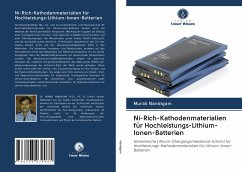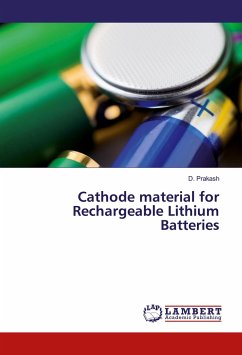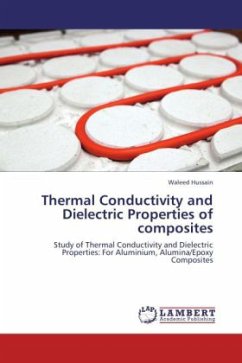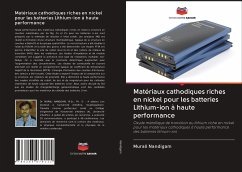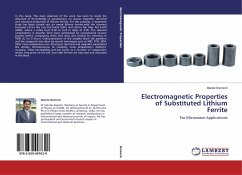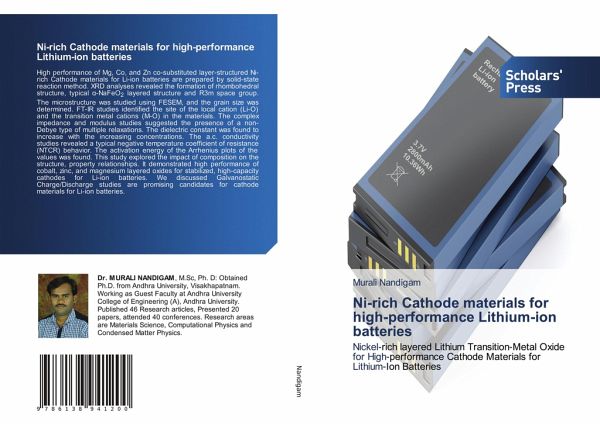
Ni-rich Cathode materials for high-performance Lithium-ion batteries
Nickel¿rich layered Lithium Transition¿Metal Oxide for High¿performance Cathode Materials for Lithium¿Ion Batteries
Versandkostenfrei!
Versandfertig in 6-10 Tagen
59,99 €
inkl. MwSt.

PAYBACK Punkte
30 °P sammeln!
High performance of Mg, Co, and Zn co-substituted layer-structured Ni-rich Cathode materials for Li-ion batteries are prepared by solid-state reaction method. XRD analyses revealed the formation of rhombohedral structure, typical -NaFeO2 layered structure and R3m space group. The microstructure was studied using FESEM, and the grain size was determined. FT-IR studies identified the site of the local cation (Li-O) and the transition metal cations (M-O) in the materials. The complex impedance and modulus studies suggested the presence of a non-Debye type of multiple relaxations. The dielectric c...
High performance of Mg, Co, and Zn co-substituted layer-structured Ni-rich Cathode materials for Li-ion batteries are prepared by solid-state reaction method. XRD analyses revealed the formation of rhombohedral structure, typical -NaFeO2 layered structure and R3m space group. The microstructure was studied using FESEM, and the grain size was determined. FT-IR studies identified the site of the local cation (Li-O) and the transition metal cations (M-O) in the materials. The complex impedance and modulus studies suggested the presence of a non-Debye type of multiple relaxations. The dielectric constant was found to increase with the increasing concentrations. The a.c. conductivity studies revealed a typical negative temperature coefficient of resistance (NTCR) behavior. The activation energy of the Arrhenius plots of the values was found. This study explored the impact of composition on the structure, property relationships. It demonstrated high performance of cobalt, zinc, and magnesium layered oxides for stabilized, high-capacity cathodes for Li-ion batteries. We discussed Galvanostatic Charge/Discharge studies are promising candidates for cathode materials for Li-ion batteries.



